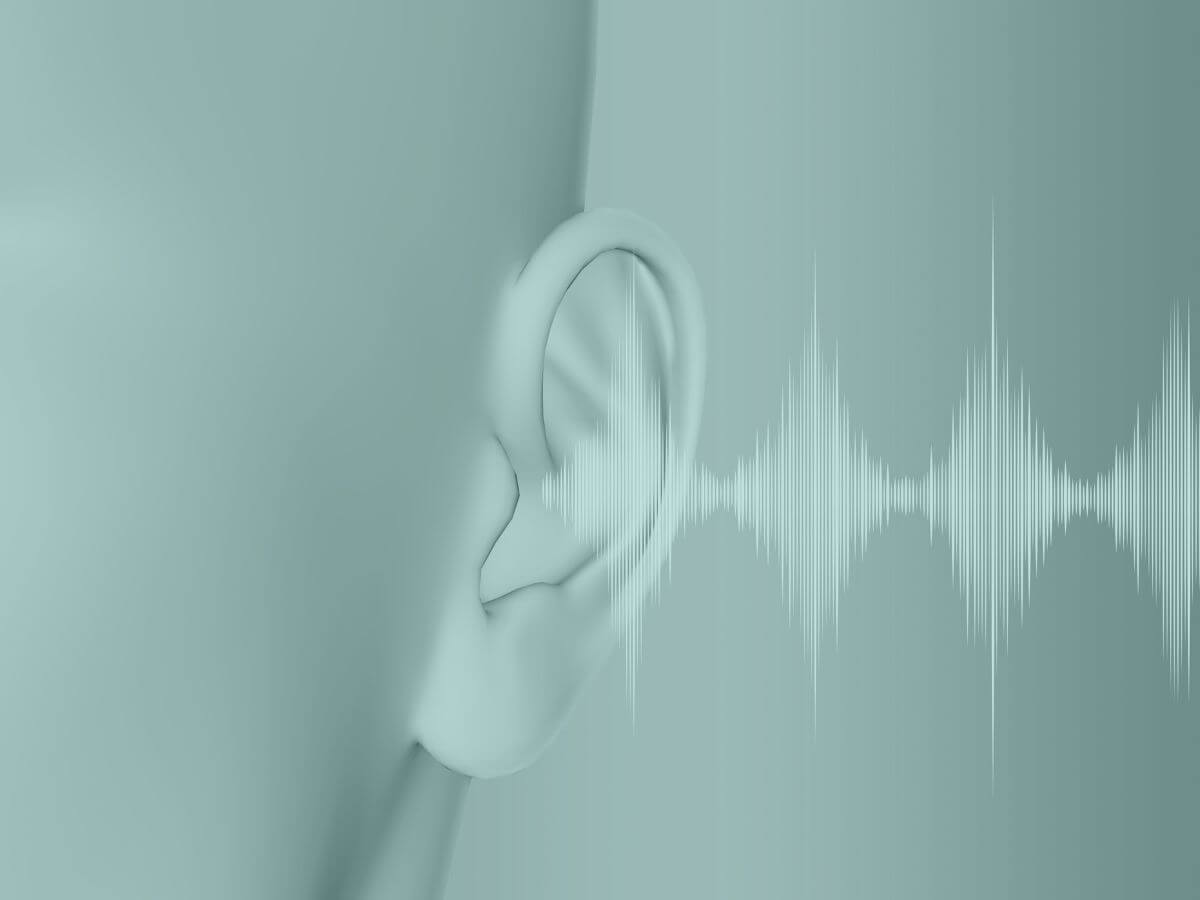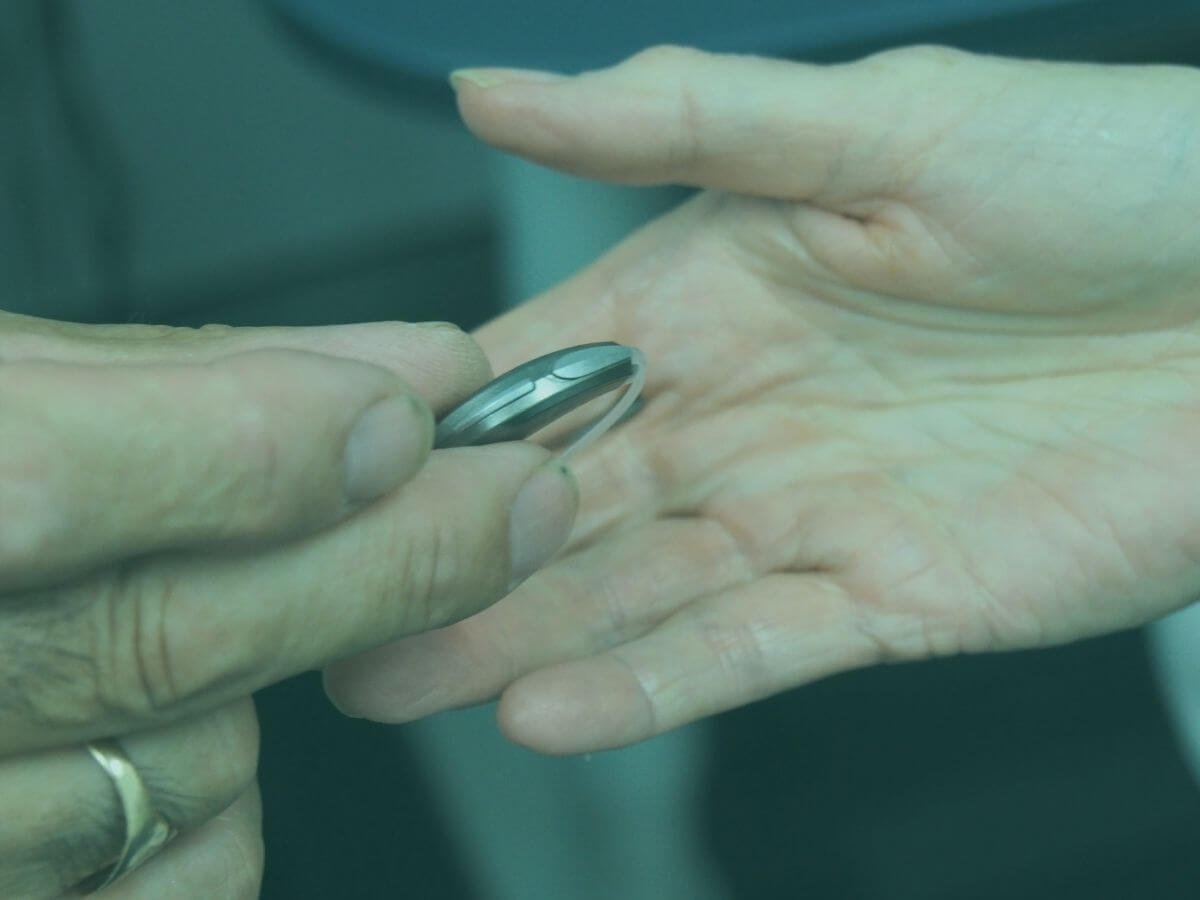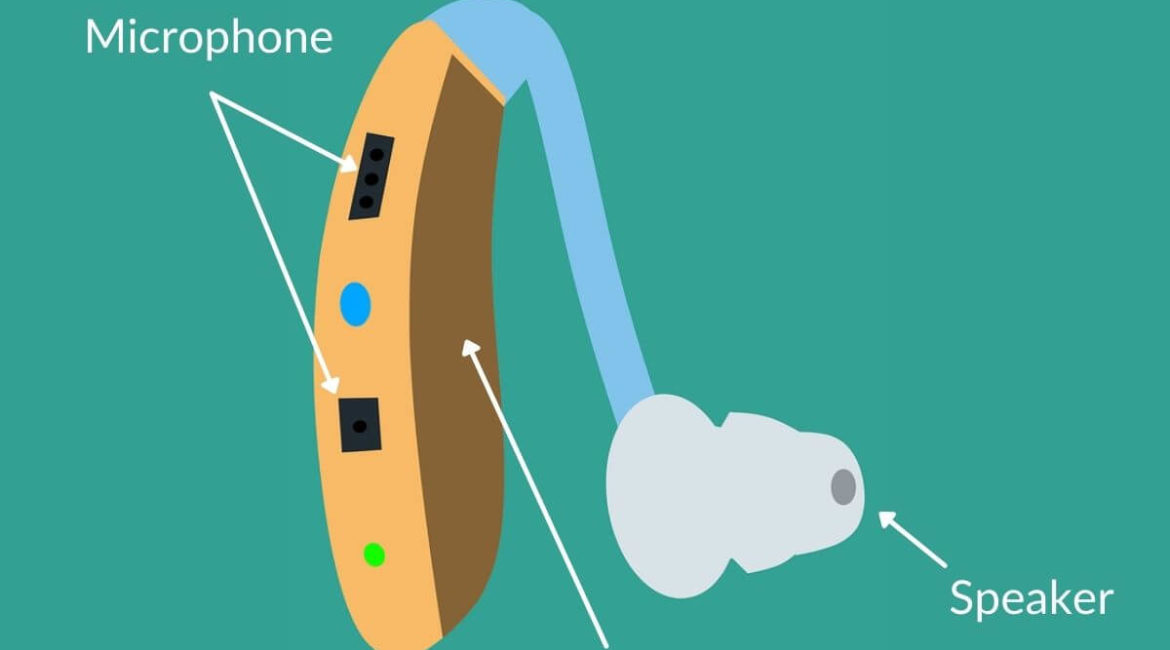A hearing aid is an electronic device that is worn behind or in the ear. It amplifies certain sounds and making them louder makes them easier to hear.
Thus, a person with hearing loss can hear more clearly, communicate better, and participate more fully in activities of daily living. Hearing aids can help many people have better hearing in quiet or noisy environments.
A Look Inside Hearing Aids
Hearing aids work by reproducing sounds by amplifying and adjusting the signals that it receives. Hearing aids consist of three basic parts: a microphone, an amplifier, and a speaker.
Microphone
The microphone is attached to the ear and picks up sound.
Amplifier
The amplifier increases sound and sends it to the speaker, which is usually attached to the side of the head.
Speaker
The speaker creates sound waves that travel through the ear canal and are transmitted to the eardrum.
How Sound Is Processed in Hearing Aids

The hearing aid receives sounds through a microphone that converts the sound waves into electrical signals. Then an amplifier increases sound received by improving the strength and range of the signals and transmits them to the inner ear through a speaker.
Amplification can be increased or decreased to compensate for the hearing impairment, this process is referred to as volume control. The hair cells that remain intact detect these amplified sounds and convert them into neural signals, which are then sent to the brain.
The more severe the damage to hair cells, the greater the hearing impairment and the greater the amplification required for hearing aids to remedy the damage. However, there are some practical limits to the level of amplification that hearing aids can deliver.
Some hearing aids can also be adjusted to compensate for the frequency of the sounds heard, this is referred to as frequency control. The hearing aid is also designed to operate at different volumes and frequencies.
The amplifier is usually contained in a separate unit that is attached to the ear or the hearing aid. It is designed to operate on batteries which allow the hearing aid to be small, lightweight, and inconspicuous.
What Can Hearing Aids Do for Your Health
If your type of hearing loss is sensorineural, hearing aids will help you have better hearing and speech understanding.
Sensorineural hearing loss is caused by damage to the tiny auditory cells in the inner ear, called hair cells. The damage can be caused by illness, old age, or injuries caused by noise or certain medications.
If you think you have hearing loss and that wearing hearing aids may help, check with your doctor. In turn, your doctor may refer you to an otolaryngologist or audiologist.
An otolaryngologist is a doctor who specializes in disorders of the ear, nose, and throat (ENT). The otolaryngologist will investigate what is causing your hearing impairment.
The audiologist is a hearing healthcare professional who will evaluate you to identify what type of hearing impairment you have and how severe it is.
Hearing Aids Can Help You Keep Your Brain Healthy

According to research, using hearing aids correctly can reduce your risk of dementia. In fact, during a 25-year period, a study confirmed hearing loss and cognitive deterioration in roughly 4,000 individuals.
Researchers discovered something intriguing: patients with hearing loss who did not use hearing aids had a greater risk of dementia and depression. People with hearing loss who used hearing aids, on the other hand, exhibited cognitive impairment at a pace comparable to those without hearing loss.
The researchers came to the conclusion that it wasn’t only the capacity to hear better that was essential, but how greater hearing helped individuals with improved hearing to stay active in everyday life. Hearing aids can assist enhance social connections, mood, and give the chance to participate in brain-stimulating activities that can help reduce cognitive loss by regaining the capacity to communicate better.
Finding the Right Hearing Aid for You

The model of hearing aid that is best for you depends on the type and severity of hearing loss you have. Generally, if the hearing loss is in both ears, it is recommended to wear a hearing aid in each ear.
This will send a more natural signal to the brain. Also, being able to hear in both ears helps you have normal hearing and understand conversations more clearly and identify where sounds are coming from.
You and your audiologist should together select the type of hearing aid that is best for you depending on your needs and lifestyle. Your audiologist would recommend you suitable hearing aid options based on hearing tests done.
Price is also something to consider, as the cost of a pair of hearing aids ranges from hundreds to thousands of dollars. Like any other equipment purchase, style and different functions have an impact on cost.
However, don’t be put off by anything else for the price. Just because a new hearing aid is the most expensive does not mean that it is the best for you.
A typical hearing aid will not restore lost hearing, but with practice, you will be able to recognize sounds and their point of origin more easily. Also, it is important to select a model that is convenient and easy to use, as you will be using it frequently.
Other things to consider include the parts and services covered by the warranty, the estimated time and cost of maintenance and repairs, the options for upgrading the product, and the manufacturer’s reputation for quality control, performance, and customer service. Visit our shop to get a free hearing test from our hearing care professional, J Glasess & Hearing is the best provider of hearing aids Singapore.

